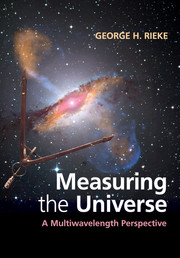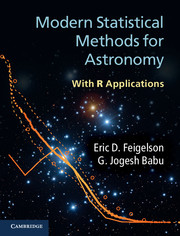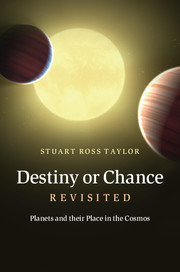Refine listing
Actions for selected content:
16950 results
5 - Cosmology
-
- Book:
- Revolutions in Twentieth-Century Physics
- Published online:
- 05 December 2012
- Print publication:
- 08 November 2012, pp 143-165
-
- Chapter
- Export citation
2 - Special relativity
-
- Book:
- Revolutions in Twentieth-Century Physics
- Published online:
- 05 December 2012
- Print publication:
- 08 November 2012, pp 39-68
-
- Chapter
- Export citation
Frontmatter
-
- Book:
- Revolutions in Twentieth-Century Physics
- Published online:
- 05 December 2012
- Print publication:
- 08 November 2012, pp i-iv
-
- Chapter
- Export citation
1 - Kosmos: aliens in ancient Greece
-
- Book:
- Alien Life Imagined
- Published online:
- 05 December 2012
- Print publication:
- 08 November 2012, pp 1-45
-
- Chapter
- Export citation
Frontmatter
-
- Book:
- Alien Life Imagined
- Published online:
- 05 December 2012
- Print publication:
- 08 November 2012, pp i-iv
-
- Chapter
- Export citation
Fundamental constants
-
- Book:
- Revolutions in Twentieth-Century Physics
- Published online:
- 05 December 2012
- Print publication:
- 08 November 2012, pp 175-176
-
- Chapter
- Export citation
6 - Einstein’s sky: life in the new universe
-
- Book:
- Alien Life Imagined
- Published online:
- 05 December 2012
- Print publication:
- 08 November 2012, pp 206-239
-
- Chapter
- Export citation
3 - Quantum mechanics
-
- Book:
- Revolutions in Twentieth-Century Physics
- Published online:
- 05 December 2012
- Print publication:
- 08 November 2012, pp 69-97
-
- Chapter
- Export citation
3 - In Newton’s train: pluralism and the system of the world
-
- Book:
- Alien Life Imagined
- Published online:
- 05 December 2012
- Print publication:
- 08 November 2012, pp 89-131
-
- Chapter
- Export citation
1 - Introduction: classical foundations
-
- Book:
- Revolutions in Twentieth-Century Physics
- Published online:
- 05 December 2012
- Print publication:
- 08 November 2012, pp 1-38
-
- Chapter
- Export citation
Figure References
-
- Book:
- Revolutions in Twentieth-Century Physics
- Published online:
- 05 December 2012
- Print publication:
- 08 November 2012, pp 174-174
-
- Chapter
- Export citation
Index
-
- Book:
- Revolutions in Twentieth-Century Physics
- Published online:
- 05 December 2012
- Print publication:
- 08 November 2012, pp 166-173
-
- Chapter
- Export citation
7 - Ever since SETI: astrobiology in the space age
-
- Book:
- Alien Life Imagined
- Published online:
- 05 December 2012
- Print publication:
- 08 November 2012, pp 240-271
-
- Chapter
- Export citation

Measuring the Universe
- A Multiwavelength Perspective
-
- Published online:
- 05 November 2012
- Print publication:
- 12 July 2012

Modern Statistical Methods for Astronomy
- With R Applications
-
- Published online:
- 05 November 2012
- Print publication:
- 12 July 2012

Destiny or Chance Revisited
- Planets and their Place in the Cosmos
-
- Published online:
- 05 October 2012
- Print publication:
- 27 September 2012
Contents
-
- Book:
- Destiny or Chance Revisited
- Published online:
- 05 October 2012
- Print publication:
- 27 September 2012, pp vii-xii
-
- Chapter
- Export citation
Plate Section
-
- Book:
- Destiny or Chance Revisited
- Published online:
- 05 October 2012
- Print publication:
- 27 September 2012, pp -
-
- Chapter
- Export citation
Terminology
-
- Book:
- Destiny or Chance Revisited
- Published online:
- 05 October 2012
- Print publication:
- 27 September 2012, pp xviii-xxiii
-
- Chapter
- Export citation
Notes
-
- Book:
- Destiny or Chance Revisited
- Published online:
- 05 October 2012
- Print publication:
- 27 September 2012, pp 275-286
-
- Chapter
- Export citation
